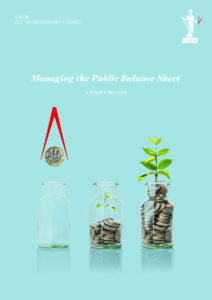Today’s announcement by the Office for National Statistics that expected losses on student loans will be recorded in the fiscal numbers when the loans are issued is a welcome development.
It more closely aligns with economic reality, reflecting the fact that a large proportion of loans will never be repaid, with many students never expected to earn enough above the (current) earnings threshold of £25,000 to repay the full amount before the balance is written off after 30 years.
The previous fiscal treatment, which allowed the government to defer recognition of these losses 30 years into the future, was misleading as well as diverging from the approach adopted under International Financial Reporting Standards (IFRS) in the Whole of Government Accounts (WGA).
The deficit is expected to increase by £12bn this year as a result of the change, narrowing (although not eliminating) the difference between the fiscal deficit, officially known as ‘public sector net borrowing’, and the actual level of net borrowing by the public sector each year.
The main downside is that this is yet another change in the way the fiscal numbers are reported, resulting in prior years’ numbers needing to be restated. This is an all-too-frequent event, with Network Rail being brought onto the balance sheet in 2014, followed by housing associations in 2015, before being taken off again in 2017 and 2018. This change in student loans will affect the numbers from 2019 onwards, causing further instability in the reported fiscal performance of HMG.
Of course, the important thing to understand is that this is a reporting change – the economic reality has not changed. However, by improving the reporting the government will no longer be able to treat student loans as ‘cost-free’ when in reality many of them will never be repaid.
For further information:
ONS announcement: New treatment of student loans in the public sector finances and national accounts
Institute for Fiscal Studies: Better accounting of student loans to increase headline measure of the government’s deficit by around £12 billion
BBC Reality Check: Could student loans ruling mean the system is redesigned?





